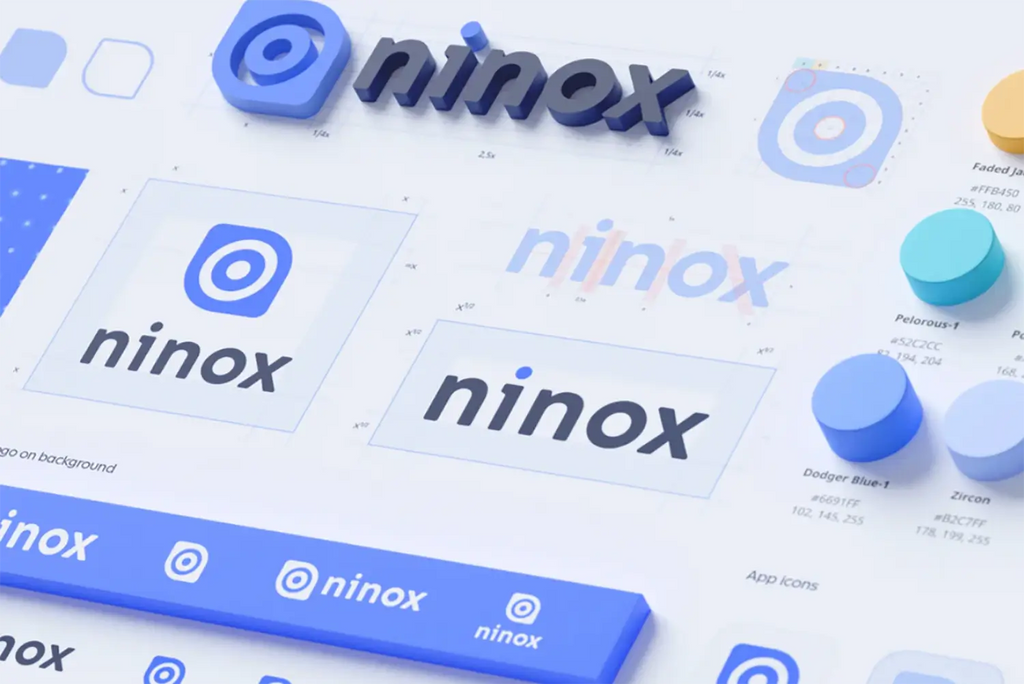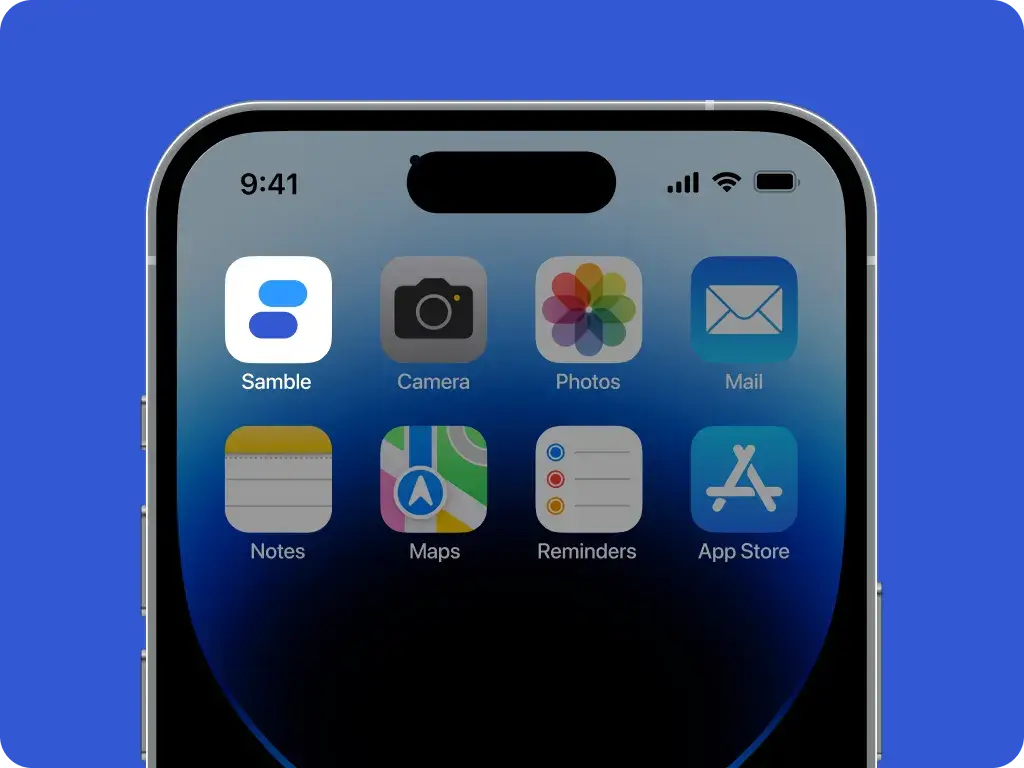Why Large Companies Should Have a Responsive Logo Design

Source: Ramotion, Ninox Brand Identity, Behance, https://www.behance.net/gallery/120897261/Ninox-User-Interface-Design
Where digital presence dictates brand success, large companies must adapt to remain competitive and relevant. One crucial aspect of this adaptability is the implementation of a responsive logo design. As businesses expand their digital footprint across a myriad of devices and platforms, the necessity for a logo that is not only visually appealing but also versatile becomes paramount. A responsive logo design ensures that a company’s brand identity is consistently represented, no matter the medium or the context in which it is displayed. This approach not only strengthens brand recognition but also enhances user interaction by providing a coherent visual experience across all touchpoints.
For large companies, whose brands are seen by millions worldwide, the ability to adapt their logos for different scales and platforms can significantly impact brand perception and marketing effectiveness. Thus, embracing a responsive logo design is not just a trend but a strategic move for large corporations aiming to maintain their prominence and connection with a global audience in the digital age.
Enhances Brand Consistency Across Platforms
For large corporations, maintaining a coherent brand identity across diverse platforms is crucial to ensuring recognition and trust. A responsive logo design plays a pivotal role in this endeavor by providing flexibility while preserving the essence of the brand. In a world where consumer interactions can vary from large billboards to tiny smartphone screens, a responsive logo adapts seamlessly, ensuring the brand's visual identity remains intact regardless of the display size. This adaptability not only strengthens brand presence but also fosters a sense of reliability among consumers.
By employing a logo that is consistently recognizable, companies can enhance their market positioning and ensure that their brand message is communicated effectively, no matter the platform. The strategic use of a responsive logo design thus becomes a cornerstone for large companies aiming to project a unified image across an array of media channels, from traditional print to digital spaces, enhancing overall brand consistency and reinforcing consumer connection.
Adapts to Different Media and Devices
The digital age demands versatility, particularly for logos used by large companies that appear across varied media and devices. A responsive logo design ensures optimal visibility and effectiveness by adjusting to different contexts without losing its core characteristics. This adaptability is vital as consumers today engage with brands through multiple touchpoints — be it a desktop browser, a wearable device, or mobile applications. A well-designed responsive logo will scale appropriately, ensuring that it is always legible and impactful, whether it is displayed on the side of a skyscraper or as an app icon on a smartphone.
This level of responsiveness not only enhances user experience but also plays a crucial role in maintaining professional aesthetics in all scenarios. As companies continue to expand their digital footprint, the ability of their logo to adapt without degradation of quality or deviation from brand standards is indispensable. This ensures that no matter where the logo appears, it communicates the brand’s identity effectively, maintaining a consistent and professional image across all platforms.
Improves User Experience
A responsive logo design significantly improves the user experience by ensuring that the logo looks perfect on any device or platform a customer might use. For large companies with a broad audience, the consistent and professional appearance of their logo is essential in maintaining a positive user interface. Whether a customer interacts with the brand via a mobile app, website, or even offline materials, they receive a consistent visual message, which builds a reliable and trustworthy brand image. This consistent representation helps in minimizing confusion and enhances user satisfaction as the visual identity of the company remains clear and recognizable.
Furthermore, a responsive logo scales to fit different spaces and contexts without losing its aesthetic appeal or becoming unrecognizable, which is crucial for keeping engagement levels high across all user interactions. As a result, companies with responsive logos are better positioned to meet customer expectations in a digital-first world, making it easier for users to identify and connect with the brand across multiple touchpoints.

Source: Azharfani, Branding Kit for Property Real Estate Company, Dribbble, https://dribbble.com/shots/21667249-Branding-kit-for-property-real-estate-company
Supports Marketing Strategies
Responsive logo design is an invaluable asset for large companies looking to support and enhance their marketing strategies. As marketing campaigns stretch across various platforms, from digital ads to physical merchandise, having a logo that adapts effectively allows for a consistent brand image in all promotional materials. This consistency aids in building brand recognition and loyalty, which are critical components of successful marketing efforts. Moreover, a responsive logo allows companies to tailor their branding to specific marketing contexts without altering the core elements of their visual identity.
For example, a logo can be simplified for smaller displays or made more elaborate for high-resolution applications. This flexibility ensures that marketing messages are optimized for every medium, enhancing the overall impact of advertising campaigns. Large companies benefit from responsive logo designs as they can leverage their iconic symbols in versatile ways to create a lasting impression, thereby amplifying their reach and effectiveness in reaching diverse consumer bases.
Facilitates Global Reach
Responsive logo design is a strategic asset for large companies aiming to enhance their global reach. In today’s interconnected world, a brand must resonate across diverse cultures and languages while maintaining a consistent identity. A responsive logo can be subtly modified to suit different cultural contexts without losing its core identity, making it more accessible and appealing to a global audience. This flexibility allows companies to maintain a universal appeal while also localizing their brand in a way that respects and acknowledges local nuances.
For example, color schemes and visual elements can be adapted to meet regional preferences, which can significantly increase brand recognition and acceptance in international markets. Additionally, responsive logos are designed to be effective across all digital and physical mediums, crucial for brands operating in global markets with varied media landscapes.
This universality ensures that wherever a company’s logo appears, from an outdoor billboard in a bustling city to a mobile app in a rural area, it communicates the brand’s message clearly and effectively. The ability to adapt visually in this way not only strengthens global marketing campaigns but also supports a company's expansion efforts, making it an indispensable tool for large companies looking to thrive in the global marketplace.
Encourages Brand Innovation
Embracing responsive logo design encourages innovation within large companies by pushing the boundaries of traditional branding. It challenges designers and marketers to think creatively about how a logo functions across various formats and platforms, fostering a culture of innovation and adaptability. This forward-thinking approach is vital for staying relevant in an ever-evolving market landscape, where technological advancements and consumer preferences can change rapidly. A responsive logo serves as a symbol of a company’s commitment to staying ahead of the curve, showcasing its ability to adapt to new trends and technologies without losing its identity.
This not only enhances the brand’s image as a leader in innovation but also inspires internal teams to continually seek out fresh ideas and solutions that can be applied across the business. Moreover, the process of developing a responsive logo itself can lead to new design techniques and technologies, further enhancing the company’s creative capabilities. For large companies, investing in such innovative branding strategies is crucial for maintaining competitive advantage, attracting top talent, and engaging a modern, tech-savvy consumer base.
Optimizes for Social Media
In the realm of digital marketing, social media platforms stand out as critical arenas for brand exposure and engagement. A responsive logo design is key for large companies to optimize their presence on these platforms. Social media requires logos to be flexible enough to look impeccable whether they are displayed on the header of a Facebook page, as a tiny Instagram profile image, or even as part of a Snapchat filter. A responsive logo adapts effortlessly to these varied formats, ensuring that the logo remains clear, recognizable, and visually appealing no matter the size or context.
This adaptability is crucial because a logo that appears blurred or unrecognizable on any platform can detract from the user’s experience and, by extension, the brand's reputation. Furthermore, a responsive logo can be quickly updated or tweaked for special promotions or events across social media, maintaining consistency with the ongoing marketing activities without needing a complete redesign. This capability not only saves time and resources but also keeps the brand dynamic and engaging across all social media touchpoints, enhancing visibility and reinforcing brand identity in a crowded digital landscape.

Source: Happy Milliarta, Samble, Dribbble, https://dribbble.com/shots/19847109-Samble-Logo-Brand-Design
Reduces Design Redundancy
Responsive logo design significantly cuts down on design redundancy for large companies, streamlining the branding process and reducing the need for multiple logo versions. Traditionally, companies might have needed separate logos for different applications—such as advertising, official documentation, and digital use—to ensure clarity and visibility. However, a responsive logo is crafted to adapt to various sizes and contexts, eliminating the need for creating different logos for different uses. This unified approach not only simplifies the branding strategy but also ensures consistency across all brand touchpoints. It reduces the workload on design teams and minimizes the potential for brand inconsistency that can arise from having multiple logo variations.
Additionally, it leads to cost savings by decreasing the amount of time and resources spent on designing, testing, and implementing different logos. The efficiency gained from employing a single, adaptable logo design allows companies to allocate their resources more effectively, focusing on other critical aspects of their marketing and branding efforts. This streamlined approach not only reinforces brand recognition but also enhances overall corporate efficiency.
Enhances Memorability
A responsive logo design plays a crucial role in enhancing the memorability of a brand, particularly for large companies operating in competitive markets. Such logos are crafted to maintain their distinctiveness and recognition across all forms of media and device interfaces. This consistent visibility ensures that customers can easily recall the brand, regardless of where or how they encounter it. A responsive logo's ability to adapt while maintaining core design elements means that a company’s brand image remains cohesive in the consumer's mind. This cohesiveness is vital for brand recall, making it easier for customers to remember and prefer the brand over others.
Moreover, the versatility of a responsive logo allows it to stand out in various applications, from minimalist mobile interfaces to large-scale billboards, enhancing its impact and memorability. This approach not only strengthens the brand's presence but also builds a lasting connection with the audience, reinforcing customer loyalty and promoting brand advocacy. In essence, a well-designed responsive logo becomes synonymous with the company it represents, embedding itself into the cultural fabric of its market and becoming a memorable part of the consumer experience.
Prepares for Future Technologies
Adopting a responsive logo design positions large companies to effectively handle the evolving landscape of future technologies. As new platforms and devices emerge, a logo must remain functional and appealing across increasingly diverse user interfaces. A responsive logo is designed with this adaptability in mind, ensuring it can easily transition to new technologies such as augmented reality, virtual environments, or wearable devices without losing its essence or functionality. This foresight in design prevents the need for frequent updates or redesigns as technology progresses, allowing the brand to continuously resonate with users on the latest platforms.
A responsive logo can incorporate smart design elements that enhance interactivity and engagement with users across different technological touchpoints, further establishing the brand as innovative and forward-thinking. By anticipating and adapting to future digital trends, responsive logos help ensure that large companies remain at the forefront of their industries, ready to capitalize on new opportunities and meet the expectations of a tech-savvy audience. This proactive approach not only preserves brand relevance but also strengthens market position in an increasingly digital world.
Conclusion
Responsive logo design is not just an aesthetic choice but a strategic necessity for large companies. It ensures brand consistency, enhances user experience, and supports marketing strategies across a myriad of platforms and devices. By embracing responsive design, companies can maintain a strong, adaptable brand presence that resonates with a global audience and stands the test of time. Investing in a responsive logo design is an investment in the future, preparing brands to seamlessly integrate with emerging technologies and maintain their relevance in a competitive market. For large companies, it's a pivotal step towards sustainable branding excellence.
Let Us Know What You Think!
Every information you read here are written and curated by Kreafolk's team, carefully pieced together with our creative community in mind. Did you enjoy our contents? Leave a comment below and share your thoughts. Cheers to more creative articles and inspirations!














Leave a Comment